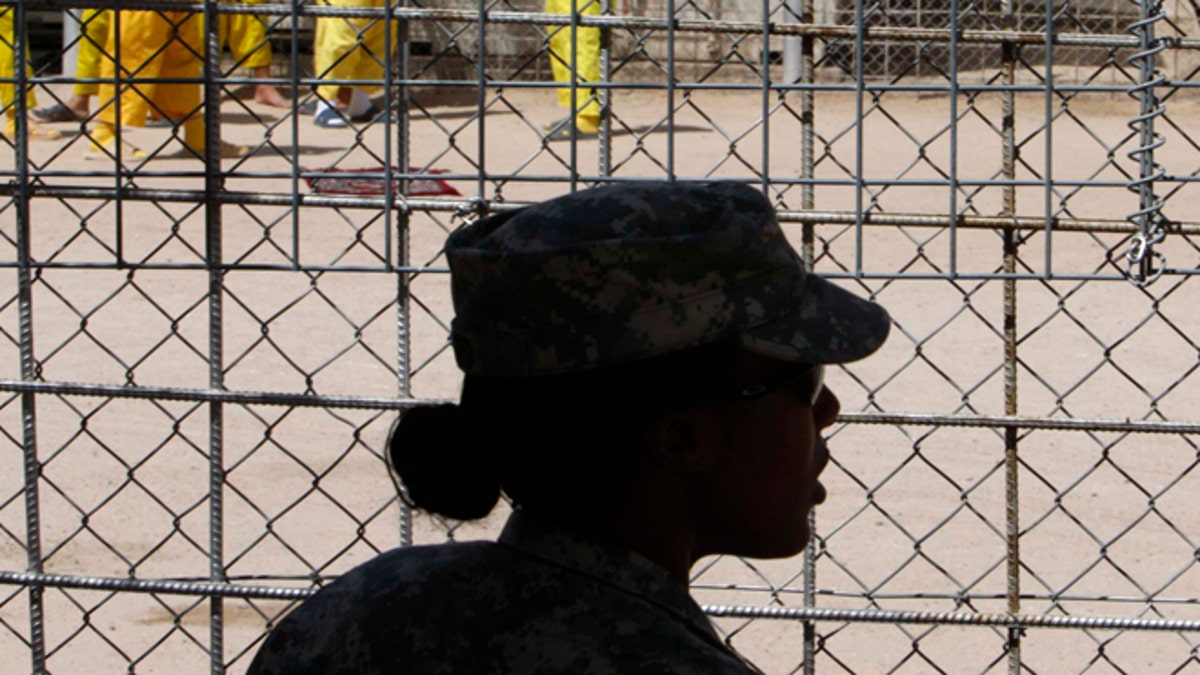
Sept. 16, 2009: A U.S. soldier keeps watch as detainees spend time at Camp Bucca in southern Iraq. (Reuters)
Calling all “average-looking women.”
That’s the appeal reportedly being made by an Army unit examining how to introduce women to combat roles. According to a report in Politico, one specialist recently voiced concern that too many “pretty” women are being used in promotional material – giving an inaccurate picture, the colonel claimed, about the nature of the job.
Col. Lynette Arnhart, in an email to colleagues, asked for photos of plainer Janes to be used.
“There is a general tendency to select nice looking women when we select a photo to go with an article,” the email said, according to Politico. “It might behoove us to select more average looking women for our comms strategy.”
But Arnhart apparently went further, making some generalizations that have generated controversy.
She reportedly wrote that “in general, ugly women are perceived as competent while pretty women are perceived as having used their looks to get ahead.” She complained about one published article that showed a “pretty woman, wearing make-up while on deployed duty,” adding “such photos undermine the rest of the message (and may even make people ask if breaking a nail is considered hazardous duty).”
The report quickly drew a backlash for the Army on social media, with one female lawmaker on the House Armed Services Committee taking to Twitter to repeatedly mock the Army over its internal debate.
“Another example that @USArmy just doesn’t get it as it debates if pretty girls should be used in pamphlets,” Rep. Jackie Speier, D-Calif., tweeted.
She added: “Pretty women perceived as not competent by #Army colonel. Great message #Pentagon sending out … Horrible!”
The flare-up comes as the Army studies how to introduce women to combat positions, a major undertaking after then-Defense Secretary Leon Panetta announced in January he was lifting the ban on women in combat.
The move overturned a 1994 rule restricting women from small ground combat units. The military has until January 2016 to implement the policy and determine whether any exceptions are needed.
Thousands of women have already served in combat areas in Iraq and Afghanistan over the past decade, but the change could open up combat jobs to hundreds of thousands more women in the years ahead.




